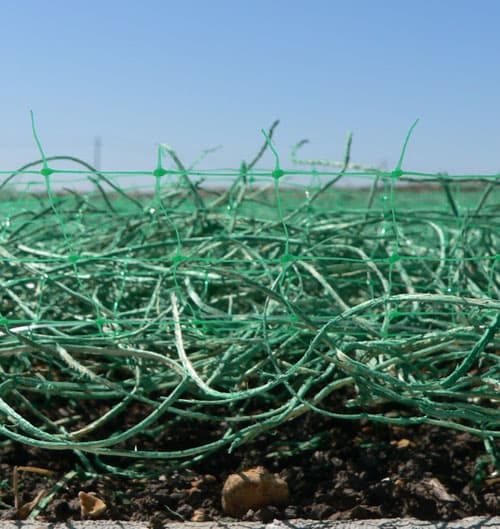In land development, erosion control is important. Aside from preventing water pollution due to runoff and the potential habitat loss of nearby ecosystems, erosion control also staves off soil loss and consequently, property loss. In urban areas, erosion control techniques are primarily concerned with stromwater runoff management, but soil loss due to winds and sloped properties must be considered as well. Here is a list of the most common erosion control methods:
- Reforestation – This is the method of restoring or restocking existing woodlands and forests that have been depleted due to lumber harvesting, deforestation, or other natural causes. The process is fairly straightforward; only using measuring ropes, dibbers, and a supply of seedlings or saplings.
Reforestation prevents soil degradation because the tree roots act as anchors for otherwise loose ground.
- Riprap – These are rubble composed of a variety of rock types including limestone and granite, which are used to armor embankments, shorelines, bridge abutments, streambeds and other seaside constructions to prevent soil erosion due to concentrated runoff or other water-related causes. A limitation of riprap arises when the slopes of the considered area are greater than 2:1; the rubble becomes unstable and is itself prone to erosion. In these circumstances, gabions are used.
- Gabions – Taking its name from the Italian word gabbia meaning “cage”, gabions are riprap encased in galvanized, steel-wire mesh cages or cylinders. These are used to stabilize slopes, stream banks, or shorelines against erosion. They are usually placed on slopes at an angle—either battered or stepped back, rather than stacked vertically. The life expectancy of gabions rely entirely on their wire frames, and premium ones have a guaranteed structural consistency of fifty years.
- Buffer Strip – These are narrow areas of land maintained in permanent vegetation to trap sediment, slow down runoff, and even control air, soil, and water quality. The root systems of the vegetation anchor soil particles together which help stop the soil from being eroded by winds. They also reduce the risk of landslides and other slower forms of erosion by stabilizing stream banks.
- Sand Fence – As the name implies, a sand fence is a type of fence which forces windblown or conventionally eroded soil to accumulate or stay within a desired location. These are used mostly to keep sand or soil off roads and to collect new material in deserts. Sand fences are typically made by attaching perforated plastic sheet to stakes at regular intervals.
- Fiber rolls – These are temporary sediment and erosion control devices which are used mainly in construction sites to protect the water quality of nearby aquatic ecosystems and reservoirs. Fiber rolls are made of coconut fiber, straw, or similar material that are formed into long tubular rolls. These rolls are then placed along the site slopes in two or three intervals, with the spaces depending on the steepness of the slopes.
- Erosion Control Blankets – Similar in make and use to fiber rolls, erosion control blankets are also used to slow down water runoff and soil erosion on slopes. These blankets are carefully laid down onto the slope soil, their upper edges buried into the ground to keep them in place.
Implementing these techniques in conjunction not only further minimizes the potential for soil erosion, but also decreases future maintenance costs allotted for the grounds around the property.



